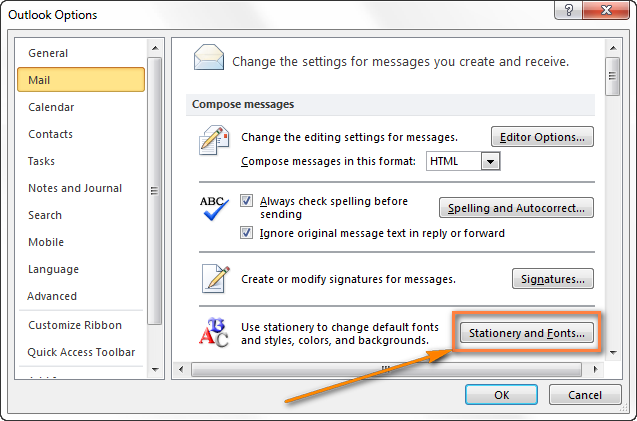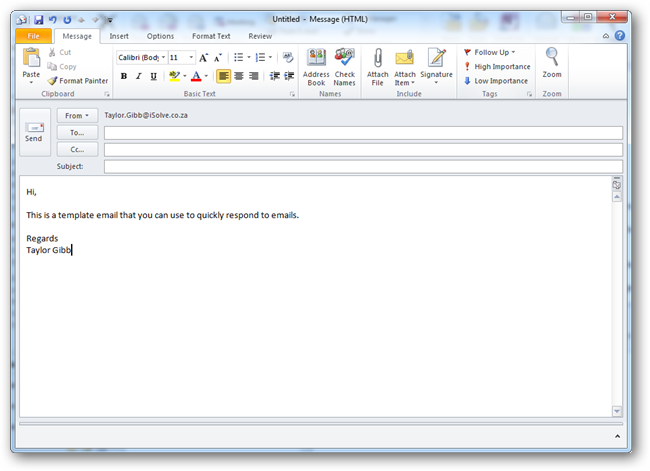
Then a new problem presented itself: using Word as Outlook’s editor (Office 2003), the “Do you want to save normal.dot?” issue came up. When I switched off the signature for new emails, things got sorted. So, I had a stationary file and a signature file being placed in the Compose window.

Or maybe it was an oft.Īnyway, I discovered that there was also a signature file in play. IIRC, I was trying to make a template to use as stationary. If I’m remembering where I was and what I was doing at the time, I found a complication (and solution) to my difficulty. Now you should be able to select that template for a new email (as per my instructions above) and everything *should* be as you saved it. Then close the email you just modified, but this time say No to saving it. You need to do do a Save As (NOT Save) and save the template as an *.oft file, with the same name as the old one. The only thing I can think of that might be affecting it is that when you make the changes to the template, you’re not saving them correctly, therefore they’re not showing the next time you create an email based on the template. I then opened a new email based on that template (as per my instructions above) and nothing changed - it was all as I’d saved it. However, I just created a new Outlook template using Rich Text, added an image, centered the image, made some text red and bold and 12 pt (instead of the default 10 pt), then saved it as the template. If you want to make changes to the wording in an email template, create a new email based on it, then Save As a template file (*.oft) under the same file name.īecause I’m a big fan of plain text emails, I haven’t seen what you’ve described. This message is now disconnected from the template so you can make any changes you want before sending it to the recipients. A new email message opens, containing all the information you added earlier.

HOW TO CREATE A NEW OUTLOOK EMAIL 2011 HOW TO
So it was time for me to find out how to create an email template in Outlook, and how to use it for a new email. While the standard wording saves time, the method I’ve been using to store it just adds to the time. When I need to create another one, I open that one, copy the text and paste it into the new email then add specific text related to the document I’ve just edited for them.

In every one of these ‘QA complete’ emails is some standard wording, which I’ve saved on the network as a *.msg file. For every document I edit for my main client, I send out a ‘QA complete’ email to the person who sent the document to me (that person might not be the author).


 0 kommentar(er)
0 kommentar(er)
